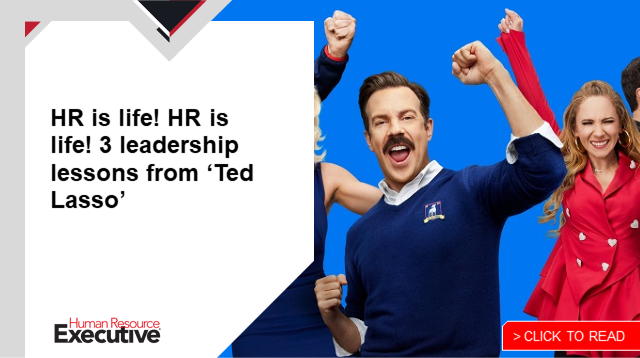Over the last weeks, the stock and bond markets have been highly volatile. Inflation rates are the highest in decades and interest rates are going up. Wages continue to climb (actually outpacing workforce output) and the labor market is staying tight.
In times like these, investors are carefully reevaluating their portfolios. I suggest that, similarly, employers should be taking a close look at their hiring practices, along with compensation and benefits.
Related: 5 employer strategies to help with soaring inflation
While focusing on the quality of hire seems obvious, many employers have lost this discipline in the mad scramble for talent and instead have hired out of desperation. Companies that have done this or adopted the “get big fast” model could be facing layoffs and budget cuts as the economy cools. In fact, we’re already seeing this. Carvana, for instance, just announced it was laying off 2,500 employees.
How do you hire in a market like this? Our recent research into human-centered talent acquisition reveals timely guidance. This research is based on a survey of more than 600 respondents representing companies across the globe and industry sectors, as well as interviews with many TA leaders and analysis of 88 different TA practices.
 First, it’s not good enough to automatically fill all open jobs. Now is when you should push back on open requisitions and ask your hiring managers why they are hiring for the positions; you also should assess the hiring criteria. Are managers simply looking to duplicate the current skills of former employees? Or, are they considering candidates who might better position teams for future work? This is the time to evaluate team organization, roles and responsibilities to ensure the highest optimization of staff resources.
First, it’s not good enough to automatically fill all open jobs. Now is when you should push back on open requisitions and ask your hiring managers why they are hiring for the positions; you also should assess the hiring criteria. Are managers simply looking to duplicate the current skills of former employees? Or, are they considering candidates who might better position teams for future work? This is the time to evaluate team organization, roles and responsibilities to ensure the highest optimization of staff resources.
We also recommend taking a close look at the skills and capabilities you’re hiring for. Now tasked with doing business in a constantly evolving environment, leaders are recognizing the value of individuals who can communicate effectively and demonstrate dexterity with problem-solving and critical thinking. Other power skills in demand are teamwork, time management, tenacity, flexibility and curiosity. When companies hire for both behavioral and technical skills, there’s notable short- and long-term performance improvement. For starters, companies bringing these capability combinations into their workforces are 5.7 times more likely to be innovation leaders.
Related: Delve into Bersin’s latest research at the 2022 HR Tech Conference this fall in Las Vegas. In his keynote, “The Disruption Never Stops: What’s New and What’s Ahead in the HR Tech Market,” you’ll hear about the emerging trends and innovations when he debuts initial findings from his extensive annual report. Learn more here.
Second, you must clearly communicate your employment brand throughout all hiring stages. Our research found that practices related tox` employer branding have an outsized impact on outcomes. These include the continual refinement of the employer value proposition (EVP), especially when the process reflects employee feedback, and consistent and strong communication of the brand across all channels—not just on career pages of the corporate website.
Your recruiters should be able to clearly differentiate your company from competitors. What is the mission of your company and what part would a candidate play in fulfilling it? What does your company do and why? What kind of learning opportunities do you offer?
Powerful and authentic employer branding is not just for the outside world and prospective job candidates. An employer brand reflecting what it’s truly like to work for the company is a primary driver of employee retention. Companies with authentic EVPs are also 5.4 times more likely to exceed financial targets, 6.1 times more likely to delight customers, and 7.4 times more likely to innovate effectively.
Third, you should be looking at internal candidates for open positions. Good investors regularly balance funds between stocks, bonds and fixed assets. This is what should be happening inside your company.
 Companies like Schneider Electric, Delta and Unilever are pursuing agile internal mobility that facilitates the movement of employees to different jobs and functional areas in ways that align with business needs and career interests. This on-demand internal mobility touches on almost every people practice, from hiring to learning to compensation. And, importantly, agile mobility is closely linked to work design: temporary roles, project-based work, rotational assignments and internal mentoring are all potential strategies savvy organizations are employing.
Companies like Schneider Electric, Delta and Unilever are pursuing agile internal mobility that facilitates the movement of employees to different jobs and functional areas in ways that align with business needs and career interests. This on-demand internal mobility touches on almost every people practice, from hiring to learning to compensation. And, importantly, agile mobility is closely linked to work design: temporary roles, project-based work, rotational assignments and internal mentoring are all potential strategies savvy organizations are employing.
For example, our research shows that forward-thinking financial services companies are creating new career pathways to develop mid-office analysts, bank managers, and blockchain, cyber and cloud engineers. You don’t necessarily have to hire new people to fill open positions; you can often develop the needed skills in current employees. In a way, this is the equivalent of rebalancing your workforce.
Our research shows that when companies go beyond the most basic practice of posting jobs on an internal portal and encourage a culture of movement and growth, they are 3.7 times more likely to see innovation rise and nearly 5 times more likely to be recognized as a great place to work.
The fourth thing to do is focus on candidate experience. When the stock market crashes, savvy investors start analyzing new stocks. Just as Warren Buffet has an uncanny way of finding good values in even the worst of times, you should be doing the same thing. Savvy employers will be conducting highly strategic sourcing, bolstering their recruiting teams, and making it easy for candidates to find the right job and apply. Throughout every step of the recruiting and hiring practice, candidates should be impressed by their experiences and drawn to your company. I call this creating “irresistibility.”
Just as you want to look for great bargains when stock prices go down, now is the time to start finding skilled people who want to upgrade their careers. As the economy slows (clearly coming soon), employees will be less inclined to job hop. So the sooner you upgrade your workforce, the better prepared you’ll be for the next few years.
For the last couple of years, most investors have reaped rewards without doing much work. This approach won’t work in today’s stock market. The same applies to hiring. Old tried-and-true practices are simply not going to be enough to maintain a workforce that is innovative, engaged and capable of taking your business into the future.
The post Insights from Josh Bersin: How to hire in a cooling market appeared first on HR Executive.